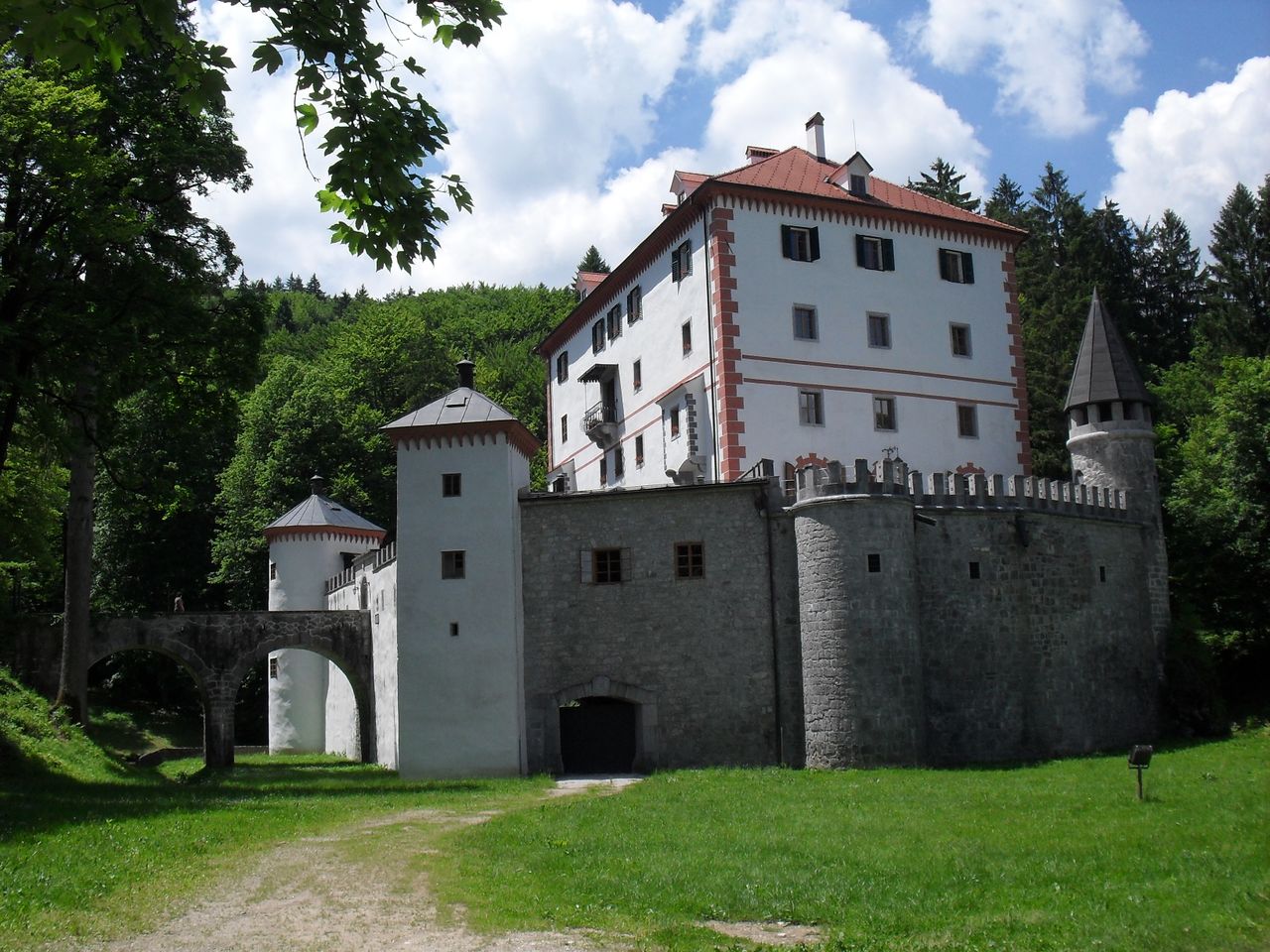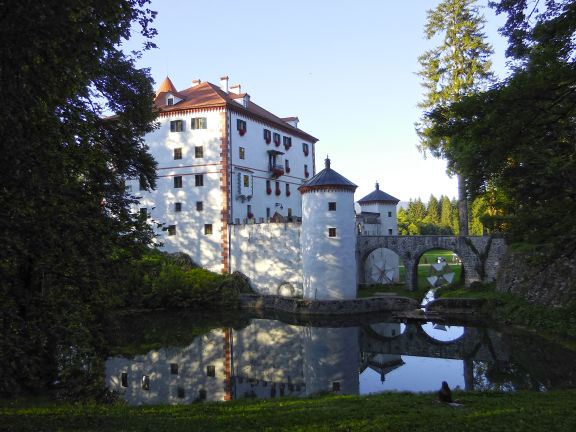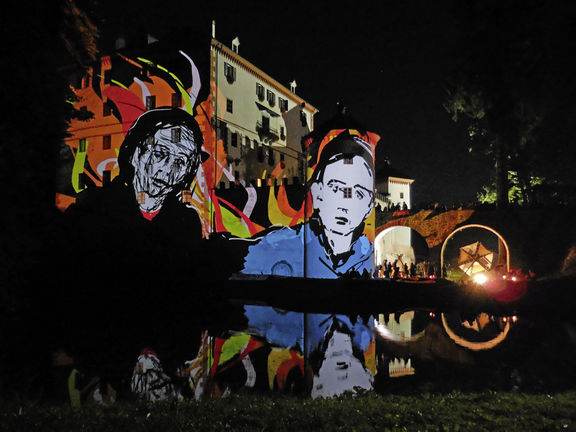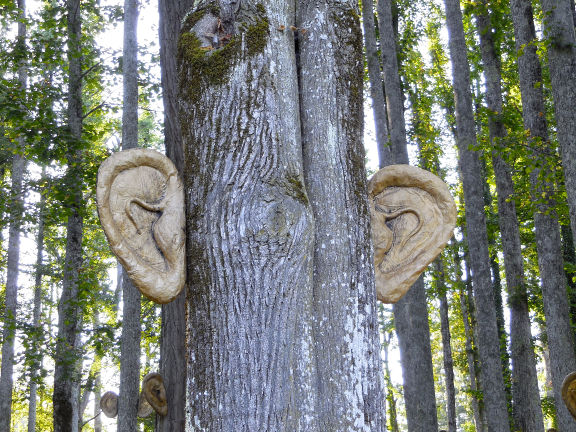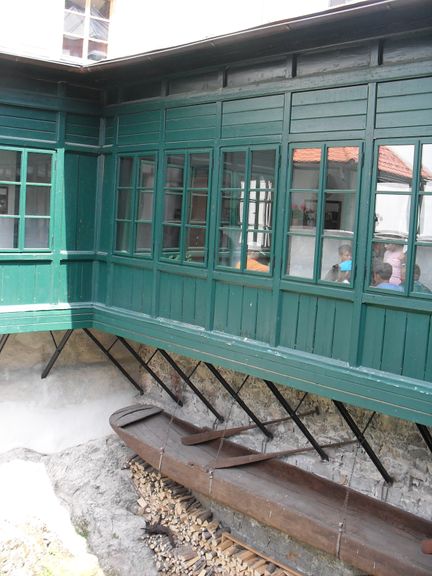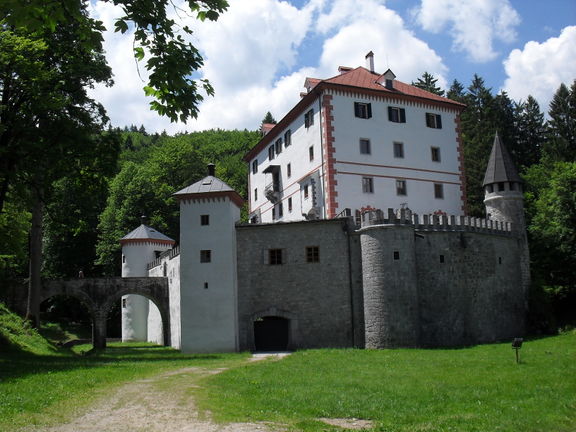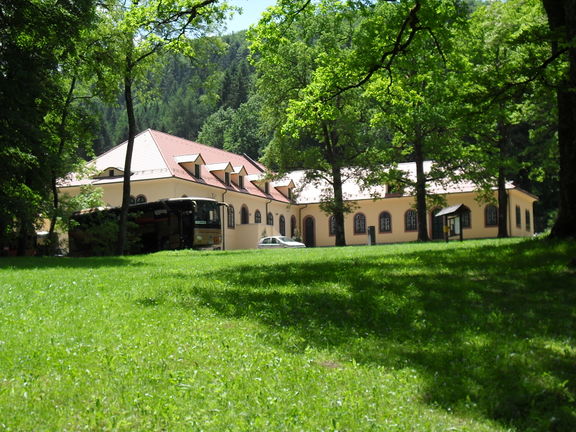Difference between revisions of "Snežnik Castle Museum"
(fertik!) |
(dead link) |
||
| (14 intermediate revisions by 4 users not shown) | |||
| Line 1: | Line 1: | ||
{{Article | {{Article | ||
| − | | status = PHOTO | + | | status = PHOTO COVER |
| maintainer = Ivan Pirnat | | maintainer = Ivan Pirnat | ||
}} | }} | ||
| Line 14: | Line 14: | ||
|managed by = National Museum of Slovenia | |managed by = National Museum of Slovenia | ||
|opening hours = (April 1st - September 30th) 10am-6pm, (October 1st - March 31st) 10am-4pm Thu, closed holidays | |opening hours = (April 1st - September 30th) 10am-6pm, (October 1st - March 31st) 10am-4pm Thu, closed holidays | ||
| + | |map = http://www.openstreetmap.org/?lat=45.682823&lon=14.469167&zoom=18&layers=M | ||
|contacts = {{contact | |contacts = {{contact | ||
|name = Maja Lozar Štamcar | |name = Maja Lozar Štamcar | ||
| Line 29: | Line 30: | ||
| fax = | | fax = | ||
}} | }} | ||
| + | | accounts = | ||
}} | }} | ||
| Line 34: | Line 36: | ||
{{Teaser| | {{Teaser| | ||
| − | {{ | + | {{wide image|Sneznik Castle - 02.JPG}} |
| − | The earliest record of [[Snežnik Castle]] dates from | + | The earliest record of [[Snežnik Castle]] dates from 1269 when it was owned by the patriarchs of Aquileia. The castle lies on a strategic site, on the edge of the Lož Valley under the Snežnik mountains surrounded by a beautiful park and vast forests with diverse and rich flora and fauna including big game ranging from bears, boars, wolves and lynxes, to wild fowl and deer, and was always favourite hunting residence. Throughout the centuries the castle has changed owners many times, but in 1853 the castle and associated forests of Snežnik were bought by German Prince Otto Viktor Schönburg-Waldenburg, who gave it to his third son Georg. Thereafter it remained in the Schönburg-Waldenburg family until 1945. The last caretaker [[Leon Schauta]] saved [[Snežnik Castle]] from destruction after the Second World War by keeping good relations with the locals before and after the war. Restoration began in the 1960s and the castle opened to the public in 1970/71. In 1983 two additional exhibition rooms were opened. After a restoration completed in 2008, the romantic state-owned castle came under the administration of the [[National Museum of Slovenia]] and is the only Slovene Castle with genuine furnished interiors. |
| + | |||
| + | Since 2014 the [[Floating Castle Festival]] has embedded into the picturesque surroundings of the castle the late summer "folk-puppet-music-theatre site-specific event". | ||
}} | }} | ||
| + | |||
| + | {{Image|Floating Castle Festival 2015 closing ceremony.jpg}} | ||
==Additions in 19th century== | ==Additions in 19th century== | ||
| Line 44: | Line 50: | ||
==Collection== | ==Collection== | ||
Snežnik Castle is one of the few castles in Slovenia in which the entire inventory of its last owners, the Schönburg-Waldenburgs, has been preserved. Its interior furnishings date mainly from the mid to late 19th century and include furniture, tableware, old paintings, wall tapestries, books and objects for everyday use. Noteworthy artefacts on display within the building include four Roman tombstones built into the castle wall (1st century CE), a German Protestant Bible dating from 1735, and an original map of the Duchy of Carniola from 1744 made by [[Janez Dizma Florjančič]]. Amongst the exhibited furniture special attention should be paid to the Egyptian Room, furnished with Salon furniture from the Egyptomania style popular in the early-20th century. | Snežnik Castle is one of the few castles in Slovenia in which the entire inventory of its last owners, the Schönburg-Waldenburgs, has been preserved. Its interior furnishings date mainly from the mid to late 19th century and include furniture, tableware, old paintings, wall tapestries, books and objects for everyday use. Noteworthy artefacts on display within the building include four Roman tombstones built into the castle wall (1st century CE), a German Protestant Bible dating from 1735, and an original map of the Duchy of Carniola from 1744 made by [[Janez Dizma Florjančič]]. Amongst the exhibited furniture special attention should be paid to the Egyptian Room, furnished with Salon furniture from the Egyptomania style popular in the early-20th century. | ||
| + | |||
| + | In the adjacent dairy farm the [[Notranjska Museum, Postojna|Notranjska Museum]] manages the dormouse collection. | ||
==See also== | ==See also== | ||
* [[National Museum of Slovenia]] | * [[National Museum of Slovenia]] | ||
| + | * [[Floating Castle Festival]] | ||
* [[Bled Castle]] | * [[Bled Castle]] | ||
* [[Hrušica - Museum Collection and Archaeological Park]] | * [[Hrušica - Museum Collection and Archaeological Park]] | ||
| + | * [[Notranjska Museum, Postojna]] | ||
==External links== | ==External links== | ||
| − | * [http://www. | + | * [http://www.nms.si/index.php?option=com_content&view=article&id=325%3Amuzej-grad-snenik-qdemoq&catid=37%3Asnenik&Itemid=56&lang=sl Snežnik Castle Museum] on [[National Museum of Slovenia]] website |
| − | |||
* [http://en.wikipedia.org/wiki/Sne%C5%BEnik_Castle Snežnik Castle on Wikipedia] | * [http://en.wikipedia.org/wiki/Sne%C5%BEnik_Castle Snežnik Castle on Wikipedia] | ||
* [http://www.burger.si/Loz/GradSneznik/seznam.html Snežnik Castle] on [[Virtual Guide to Slovene Museums and Galleries]] | * [http://www.burger.si/Loz/GradSneznik/seznam.html Snežnik Castle] on [[Virtual Guide to Slovene Museums and Galleries]] | ||
Latest revision as of 03:58, 23 November 2018
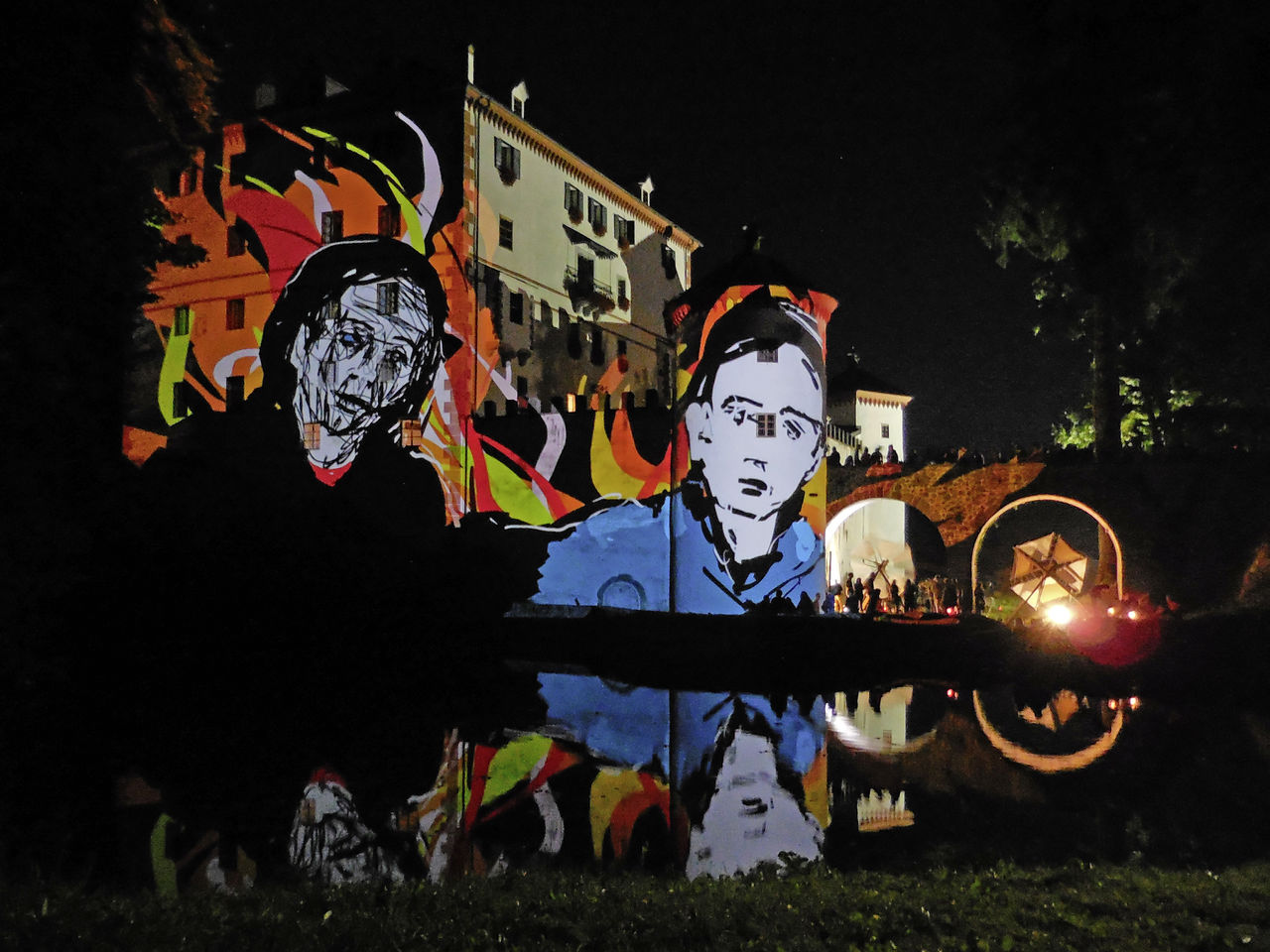 Closing ceremony of the Floating Castle Festival, Snežnik Castle, 2015
Closing ceremony of the Floating Castle Festival, Snežnik Castle, 2015
Additions in 19th century
Prince Georg Schönburg-Waldenburg had several additions made to the castle and gave it the appearance it has preserved to the present day. In 1860–1864 a third floor was added, a robust round tower at the back, a cellar and on top of it a terrace with battlements and a small round, conical tower. This new structure was connected to the walls which enclose the inner courtyard. At the same time the exterior was altered and the interior was also renovated and embellished with precious furniture and other furnishings to serve the purposes of the owner. Prince Georg also had an outbuilding added and arranged the surrounding park in the pattern of contemporaneous English parks.
Collection
Snežnik Castle is one of the few castles in Slovenia in which the entire inventory of its last owners, the Schönburg-Waldenburgs, has been preserved. Its interior furnishings date mainly from the mid to late 19th century and include furniture, tableware, old paintings, wall tapestries, books and objects for everyday use. Noteworthy artefacts on display within the building include four Roman tombstones built into the castle wall (1st century CE), a German Protestant Bible dating from 1735, and an original map of the Duchy of Carniola from 1744 made by Janez Dizma Florjančič. Amongst the exhibited furniture special attention should be paid to the Egyptian Room, furnished with Salon furniture from the Egyptomania style popular in the early-20th century.
In the adjacent dairy farm the Notranjska Museum manages the dormouse collection.
See also
- National Museum of Slovenia
- Floating Castle Festival
- Bled Castle
- Hrušica - Museum Collection and Archaeological Park
- Notranjska Museum, Postojna
External links
- Snežnik Castle Museum on National Museum of Slovenia website
- Snežnik Castle on Wikipedia
- Snežnik Castle on Virtual Guide to Slovene Museums and Galleries



